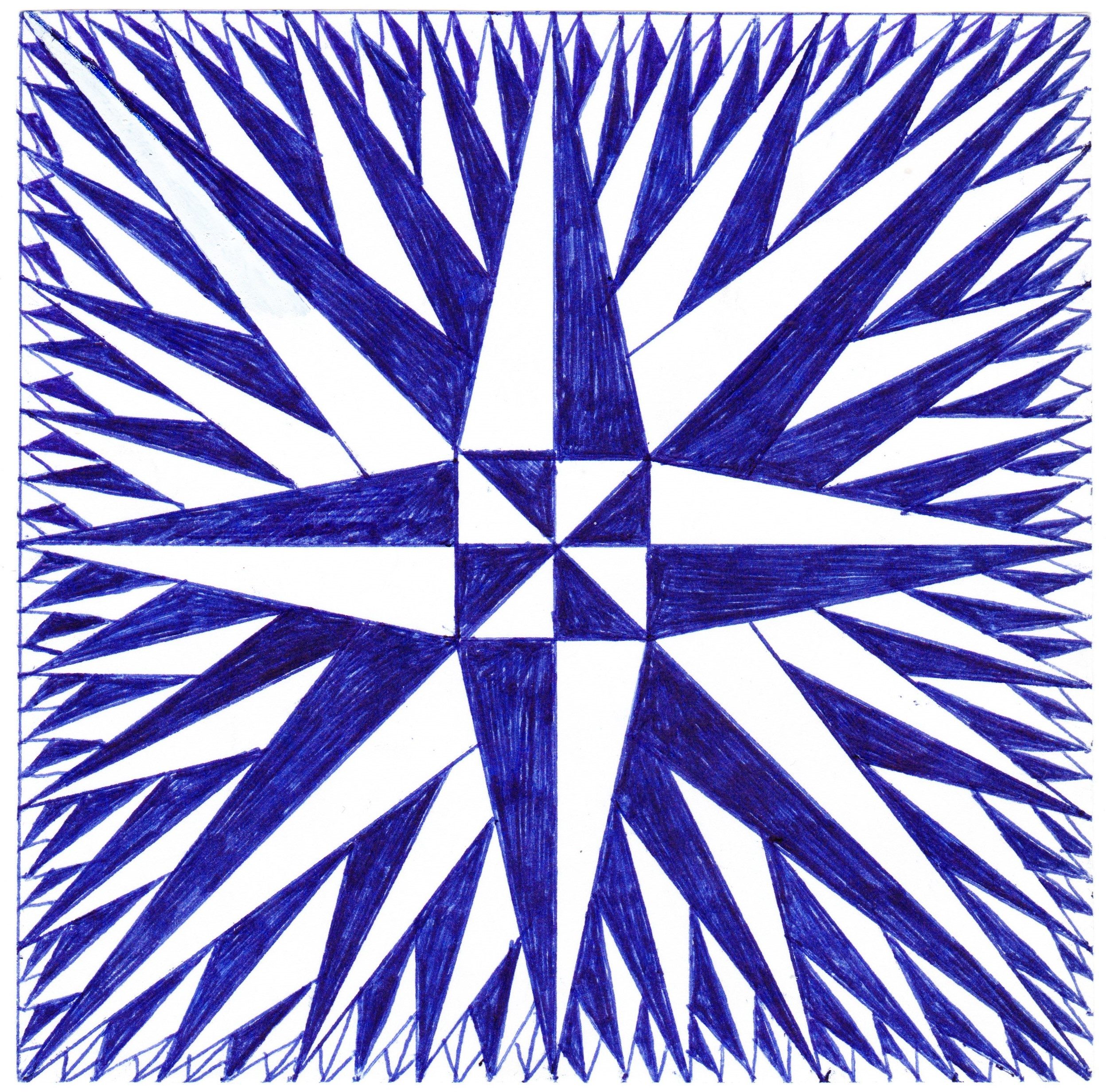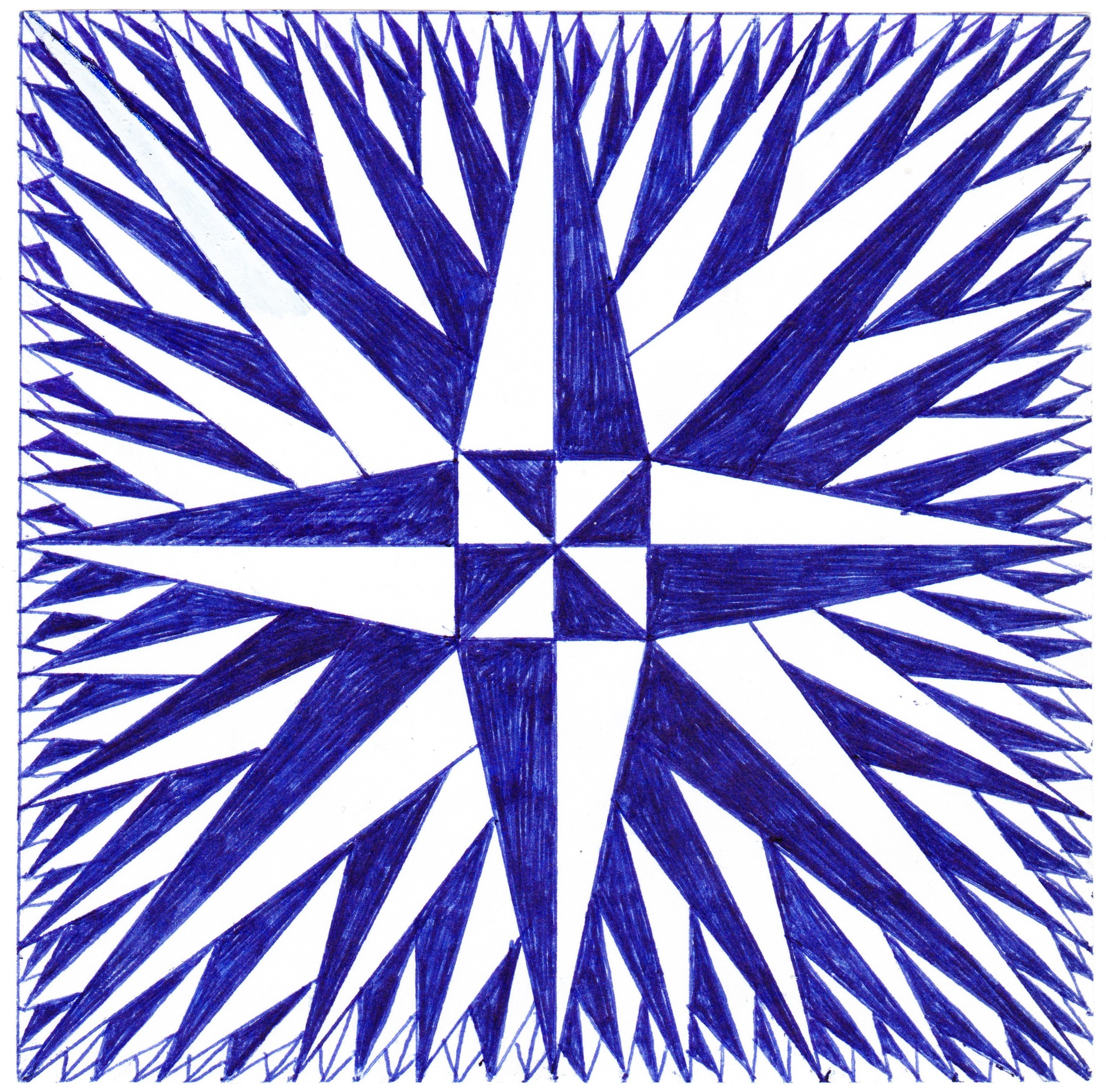The first thing I do is sit with a straight spine, feet flat on the ground, eyes closed, hands resting palms up, one inside the other. Then I take a breath in and out. Then I notice how I am sitting and I make some minor adjustments: nudge my butt further toward the back of the seat, swivel my feet slightly so they are comfortably positioned beneath my knees, adjust my wallet in my front pocket so that my wrists and hands can lie comfortably in my lap.
Another deliberate breath in and out. I notice a few more things: My belly is jutting forward a bit, so I tighten up my core muscles to sit up straighter. I am slouching forward a bit, so I draw my shoulders back, then scrunch them up toward my ears, then find the place where they belong. I notice my head is nodding slightly forward, so I raise my chin a bit and find a comfortable place where my head is sitting atop my neck. As my mentor used to say, “make your vertebrae like a stack of coins.”
Another conscious breath in and out. More noticing: My face feels pinched. I smile wide and crinkle my eyes, almost to where my cheeks hurt, and then I let those muscles relax. I feel the area around my eyes begin to soften. My eyelids pull gently away from the bottoms of my eyes. Sometimes they remain closed, sometimes they feel better resting slightly ajar.
Another conscious breath, but this is the last one. Now I turn my attention to just noticing my breaths. I practice a method called “counting breath,” where I observe each breath and label it with a number, counting the breaths from “one” to “six” and then starting at “one” again. It doesn’t matter what the quality of each breath is. All that matters is observing the breath and labeling it with its number. Sometimes, even though I have only taken a few breaths, I can’t remember which number I am on, so I start again at “one.” Sometimes I find myself on a higher number—seven, or seventeen even!—and when I notice this, I begin the next breath at “one” again.
As I am counting my breaths, I am also observing them. One. “That breath is so short. It feels stifled, or tight. I wonder why that is?” Two. “Short again.” Three. “Short, but a little better”. Four. “Just notice your breath!” Five. Six. One. “I wonder if I am anxious about something I have coming up today.” Two. Three. “I can’t think of anything I might be anxious about.” Four. “Maybe I am just tired.” Five. “Yes, I only got six hours of sleep, and sometimes that is not enough. That must be why my breaths are short.” Six. “My breathing will settle down in a moment.” One. Two. Three. “Hey! That breath was a little deeper!” Four. Five. “There is more movement in here now. It’s looser.” Six. One. You get the idea.
At this point I usually transition into just noticing my breaths without counting. And then the interior space of my body and mind seems to open up and I notice more things there. I am slouching again, and I correct it. I am thinking about something I need to do. I remind myself that I will remember it again later. I am faintly aware of the blood pulsing through the arteries of my neck. I notice a pain in my back. I notice the sunlight on my closed eyelids. I think “what a pleasant feeling!” I notice my breaths again. One. Two. Three. I am now suddenly aware of my whole body sitting in this room in the sun. It’s not that I am looking at it from outside myself or anything like that. It is just that my awareness has shifted, from noticing this particular sensation or this particular thought or emotion, to being aware of my whole self. I am aware I am an interior-and-exterior-entity connected to space and sunlight and I am breathing and pulsing and thinking and feeling and sensing, all at once.
Sometimes at this point I will notice a kind of energy that seems to surge from the base of my spine up through the crown of my head. It feels like this intense connection of energy from bottom to top. Sometimes I almost feel like I can observe it visually, inside. I always thought maybe that had something to do with chakras opening up in what is sometimes called one’s “subtle body.” I have recently read that we have over 100 million neurons in our gut, and that the vagus nerve connects this gut-brain to the brain in our heads. One of the things this nerve communicates is the rest-and-relax impulse. I wonder if what I am experiencing is the activation of this vagus nerve due to the dozen or so minutes of meditation. I wonder if this vagus nerve could be the physical manifestation of the chakra system, or if they are two distinct things.
Another thing that may be happening: When Andrew Newberg did SPECT scan imaging of Buddhist monks meditating and Christian nuns praying, he found that both groups exhibited a decrease in blood flow to the posterior superior parietal lobe (the part of the brain that orients us in space and time) and an increase in blood flow to the prefrontal cortex (the part of the brain responsible for our attention and intention). The Buddhists labeled this an experience of “nirvana” and the nuns labeled it a “closeness to God,” but in both cases there were these experiences of connectedness and awareness. And it makes sense: How do we get the brain to stop doing the calculus of thinking of itself as an independent entity making its way through a foreign world? Just sit still for twenty minutes. How do we get the brain to turn its energy to increased awareness, focus, and intention? Just practice paying attention to everything you can—sensations, emotions, thoughts—for twenty minutes. Eventually you will lead yourself into a state in which you experience increases connectedness and awareness – of whatever you think is out there to be connected to and aware of.
All of this is the result of just sitting and noticing. The important thing here is the noticing – not some magic goal of not-thinking or clear-mindedness. If we just sit and notice long enough, our minds will shift into this state where even if we are thinking and feeling and sensing, we are doing it in a way that is part of a larger whole. We will start to identify with (and, eventually, to live out of) that larger whole. It is as if our minds are a movie projector and screen. For most of our lives, we identify with what is happening on the screen. With meditation, we start to become aware of the projector, the projection, and the screen. We start to identify more with the screen, the still, clear, calm screen on which things are sometimes projected. I think we even start to have some control over whether we turn that projector to its biggest and brightest setting, or whether we shrink the picture down and just let the projector do its thing without letting it take over the whole screen. The main thing to know is that we don’t need to turn the projector off.
Whether any of this happens or not, whether my meditation seems to “go well” or not, whether my breathing settles into a calmer rhythm or not—in other words, no matter what happens—by the time my timer sounds after twenty minutes, I usually feel a good bit better than I did beforehand. Even if I still have a lot on my mind or I know I have a lot to do, I seem to be more centered, to have more focus, to have a clearer sense of priorities, of what to do next. My movements feel calmer and more deliberate and yet also more natural. All of this is the result of “just noticing” whatever is there. This is why I say, “Failing at meditation is meditation.” If you think you failed at it because you noticed all kinds of thoughts, emotions, and sensations, you are wrong. Keep up that kind of failing and you will find good things around the corner.

